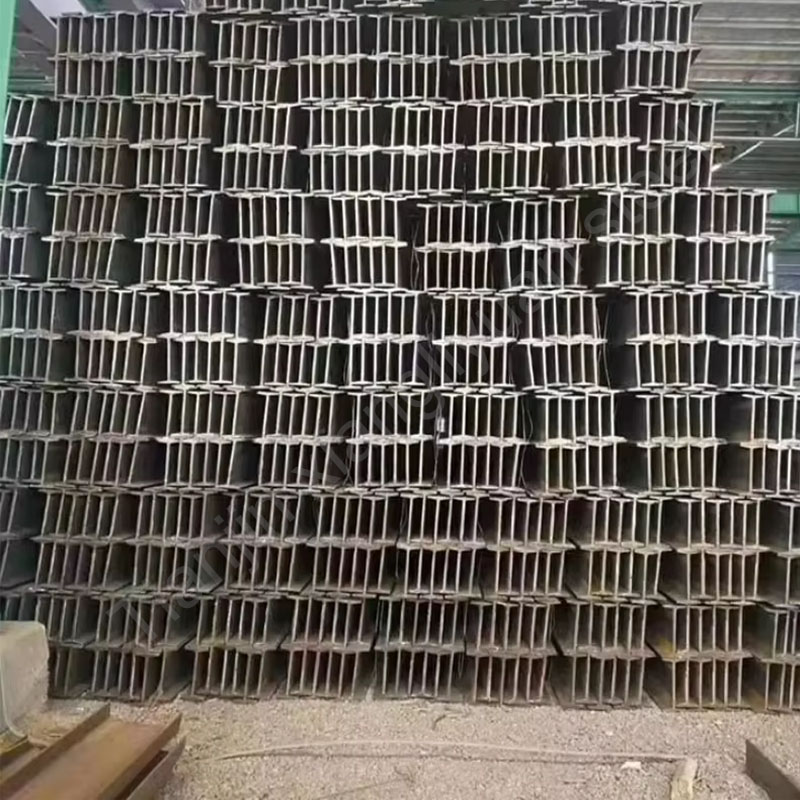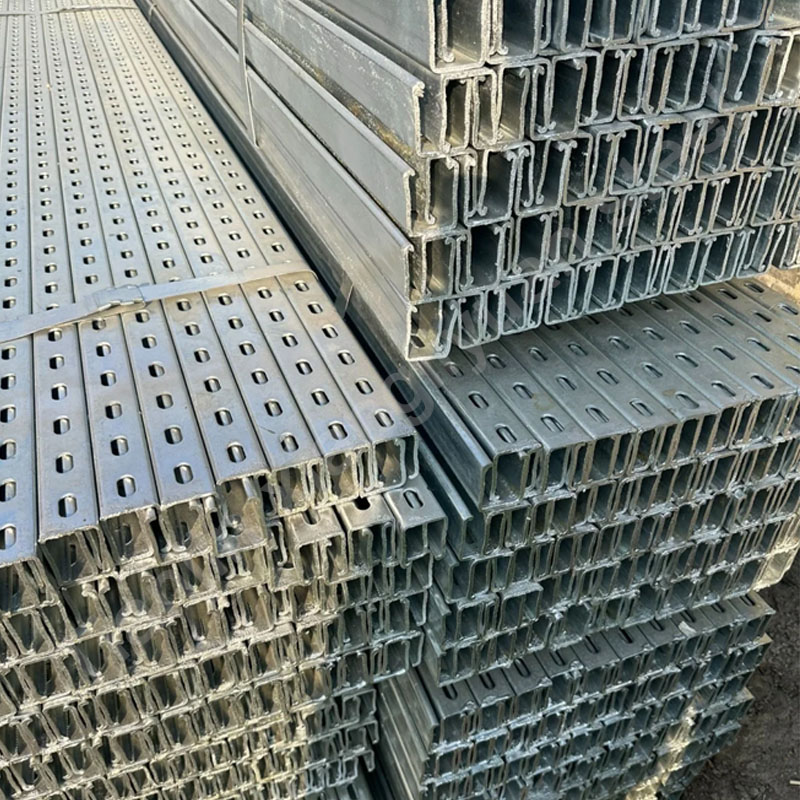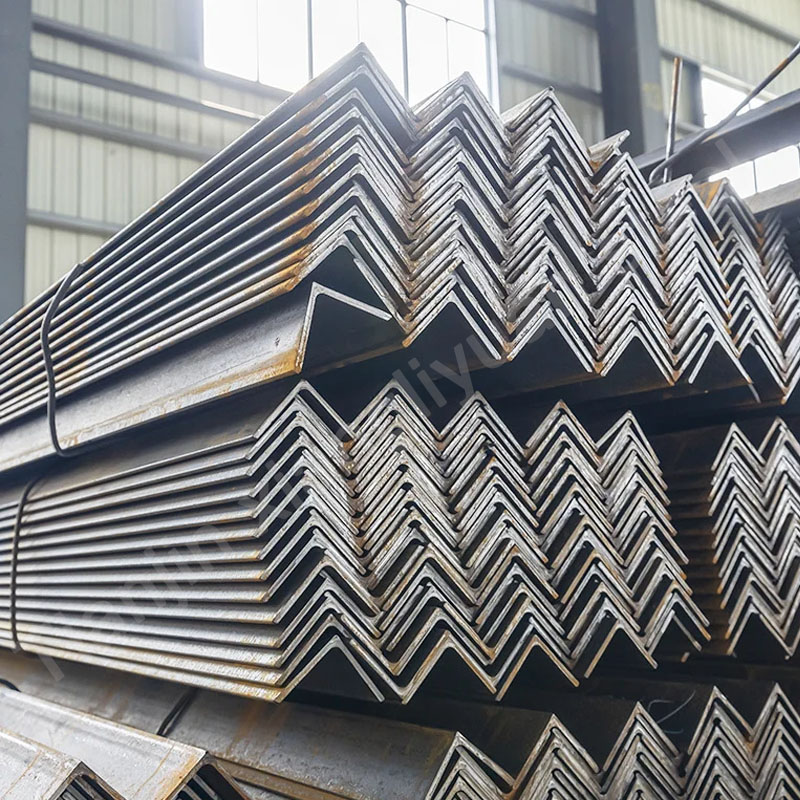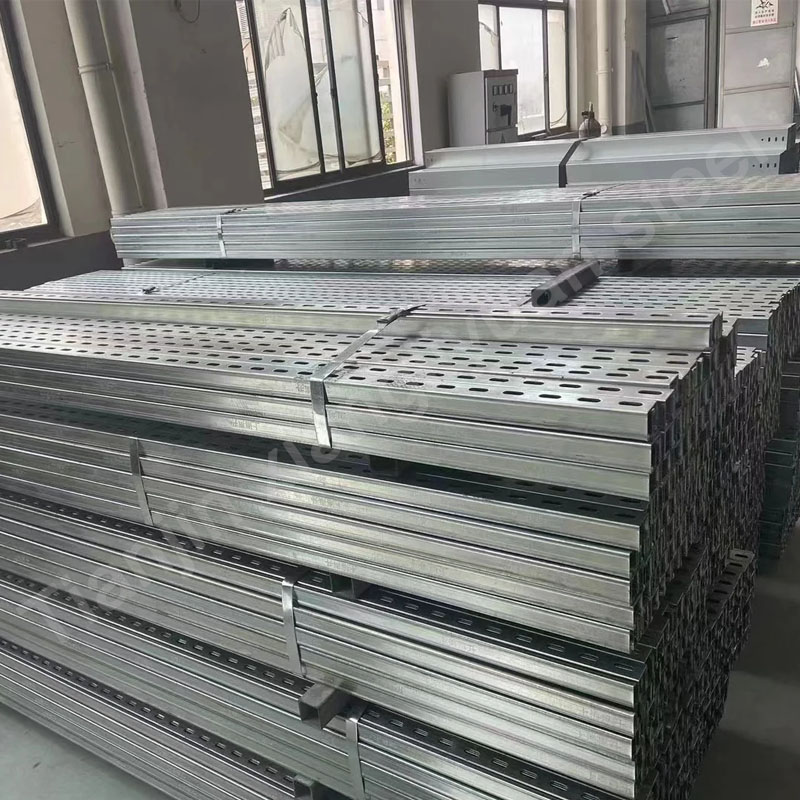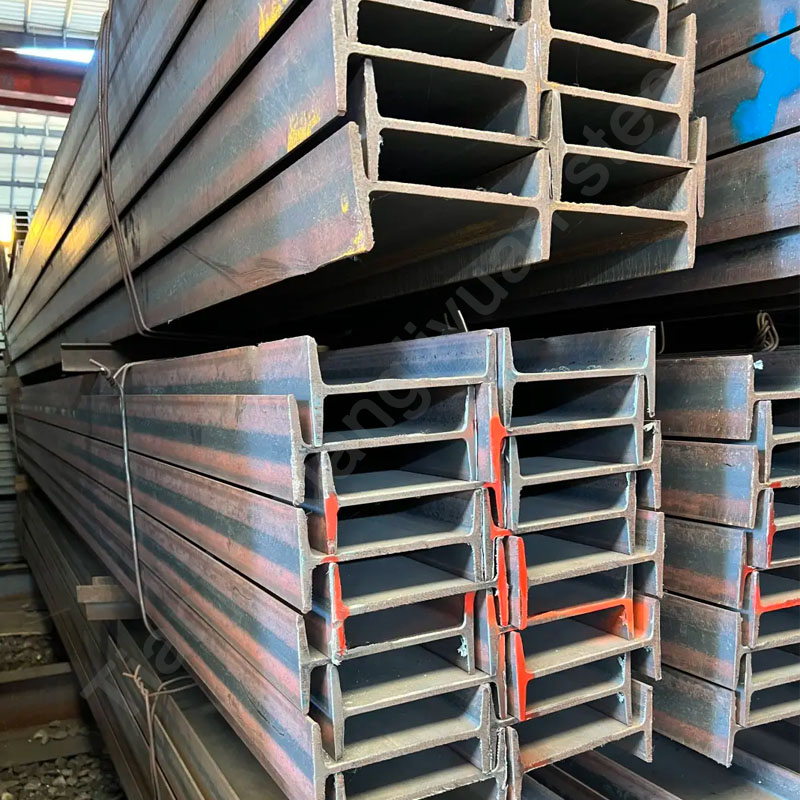Profile Steel is a steel with a certain cross-sectional shape and size, which is widely used in structural engineering such as buildings, bridges, vehicles, and ships. Common types of Profile Steel include:
I-beam (I-steel): The cross-section is I-shaped, mainly used in load-bearing structures, such as beams and columns.
H-beam: The cross-section is H-shaped, the flange is wide and the thickness is uniform, and it is widely used in large-span structures and heavy buildings.
Angle steel: There are two types of equal and unequal sides, which are often used for the reinforcement of metal structure frames and buildings.
Channel steel: The cross-section is channel-shaped, mainly used for supporting components in machinery and building structures.
T-steel: It is obtained by splitting I-beam or H-beam, usually used as beams or longitudinal beams.
Z-steel: It is commonly used in light structures or cold-bent thin-walled Profile Steel, and is widely used in building envelope structures.
Round steel: Steel with a circular cross-section, mostly used for mechanical processing, building structures, etc.
Square steel and flat steel: The cross-section of square steel is square, and the cross-section of flat steel is rectangular, mainly used in frame structures or as connectors.
Common Profile Steel grades include the following categories:
1. Carbon structural steel
Q235 series (Q235A, Q235B, Q235C, Q235D): This is a commonly used carbon structural steel in China, with moderate strength, suitable for ordinary buildings and engineering structures.
Q345 series (Q345A, Q345B, Q345C, Q345D, Q345E): It is a low-alloy high-strength steel with high strength and good toughness, suitable for bridges, building structures, vehicles and other occasions that need to bear large loads.
ASTM A36: Carbon structural steel in the American standard, with strength similar to Q235, widely used in engineering structures and bridges.
2. Low-alloy high-strength steel
Q355 series (Q355A, Q355B, Q355C, Q355D, Q355E): Low-alloy high-strength steel, with good weldability and high strength, suitable for steel structure buildings, bridges, vehicles, etc.
S355 series (such as S355JR, S355J0, S355J2): European standard low-alloy high-strength steel, widely used in construction and machinery manufacturing.
3. Alloy structural steel
40Cr, 20CrMo, 35CrMo: This type of steel has good wear resistance and high strength, and is often used to manufacture mechanical parts. It can also be used for high-load steel components.
42CrMo: It has high strength, toughness and wear resistance, and is suitable for manufacturing high-strength mechanical parts and important structural parts.
4. Weathering steel
Q355NH, Q450NQR1: It is a weathering steel with good corrosion resistance. It is often used in outdoor buildings and bridges, and can reduce the application of coating or uncoating.
Corten A/B: This is a weathering steel in the US standard. It is often used in external building structures. It has high corrosion resistance and is particularly suitable for harsh environments.
5. Stainless steel
304, 316 series stainless steel: These steels have excellent corrosion resistance and strength, and are often used in building decoration, chemical equipment, and steel components in corrosive environments.
SUS304, SUS316: Japanese standard stainless steel materials, used for structures or decorative occasions that require high corrosion resistance.
6. Special purpose steel
High-strength marine steel (such as grades A, B, D, E, etc.): used in shipbuilding, requiring good weldability and impact resistance.
Low temperature resistant steel: such as Q345E, S355J2, used for buildings and structures in cold areas, and can maintain toughness and strength in low temperature environments.
The following are common Profile Steel standards:
1. Chinese standard
GB/T 706-2016: Standard for hot-rolled I-beams, channels and angles, which specifies the size, shape, weight and allowable deviation of I-beams, H-beams, angles and channels.
GB/T 11263-2017: National standard for hot-rolled H-shaped steel, mainly applicable to H-shaped steel in buildings, bridges and other structures.
GB/T 9787-2016: Standard for equal-leg angle steel, specifies the size, shape, weight and allowable deviation of equal-leg angle steel.
GB/T 9788-2016: Standard for unequal-leg angle steel.
GB/T 6725-2018: Standard for cold-formed steel, applicable to cold-formed structural steel.
2. International standards
ASTM A36/A36M: American standard, applicable to steel with carbon steel structural shapes, such as I-beams and H-beams.
ASTM A572: Covers high-strength low-alloy structural steel profiles, widely used in buildings and bridges.
JIS G3192: Japanese standard, specifies the size, shape, weight and allowable deviation of hot-rolled steel (I-beams, H-beams, channels, etc.). EN 10025: European standard covering hot-rolled structural steel profiles, commonly found in H-beams, I-beams and angles.
3. Other regional standards
DIN 1025: German standard that specifically specifies H-beams of different cross-sections.
BS EN 10365: British and European standard for dimensions and tolerances of hot-rolled I-beams and H-beams.
Each of these Profile Steel has different structural strengths and uses, and the appropriate type of steel section can be selected according to the specific needs of the project.

